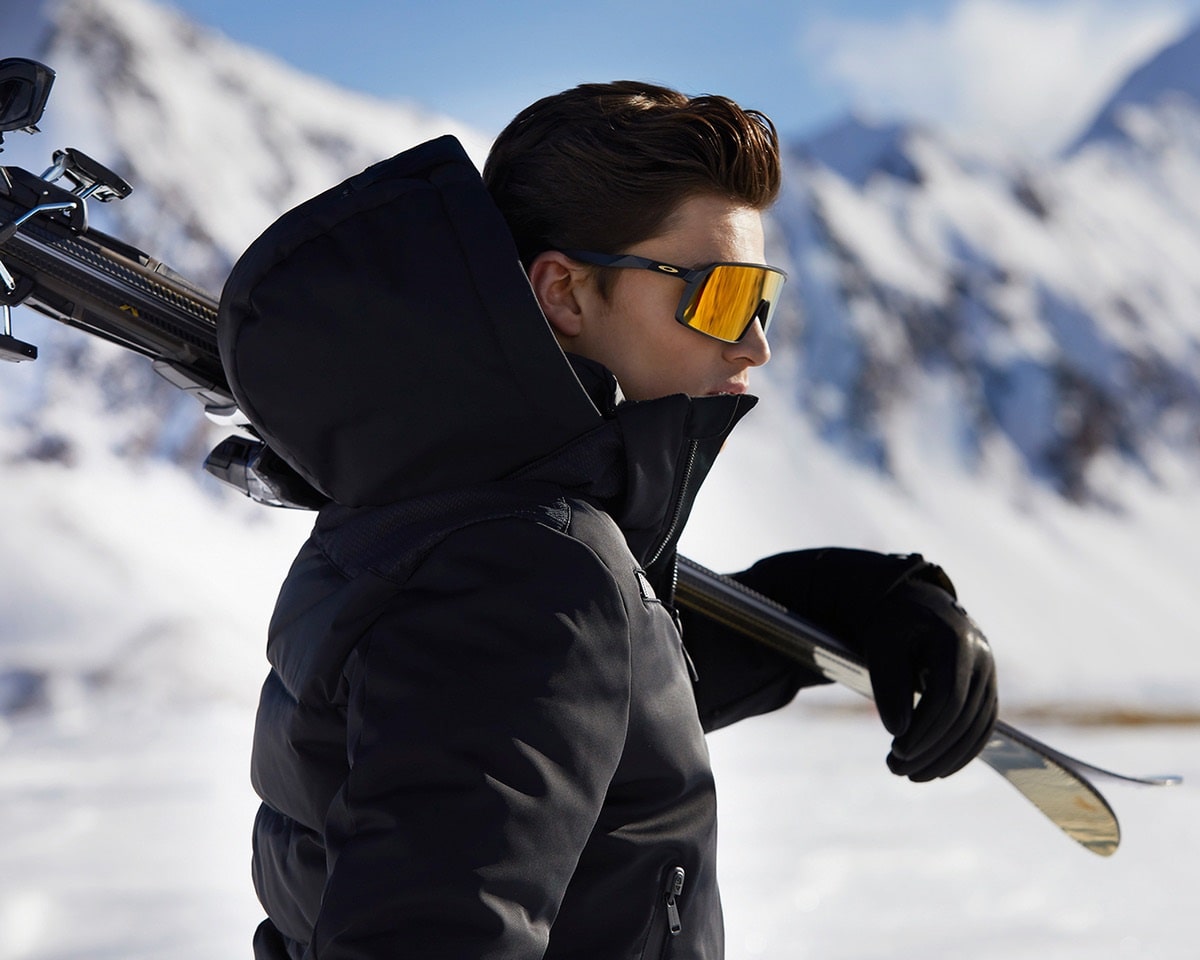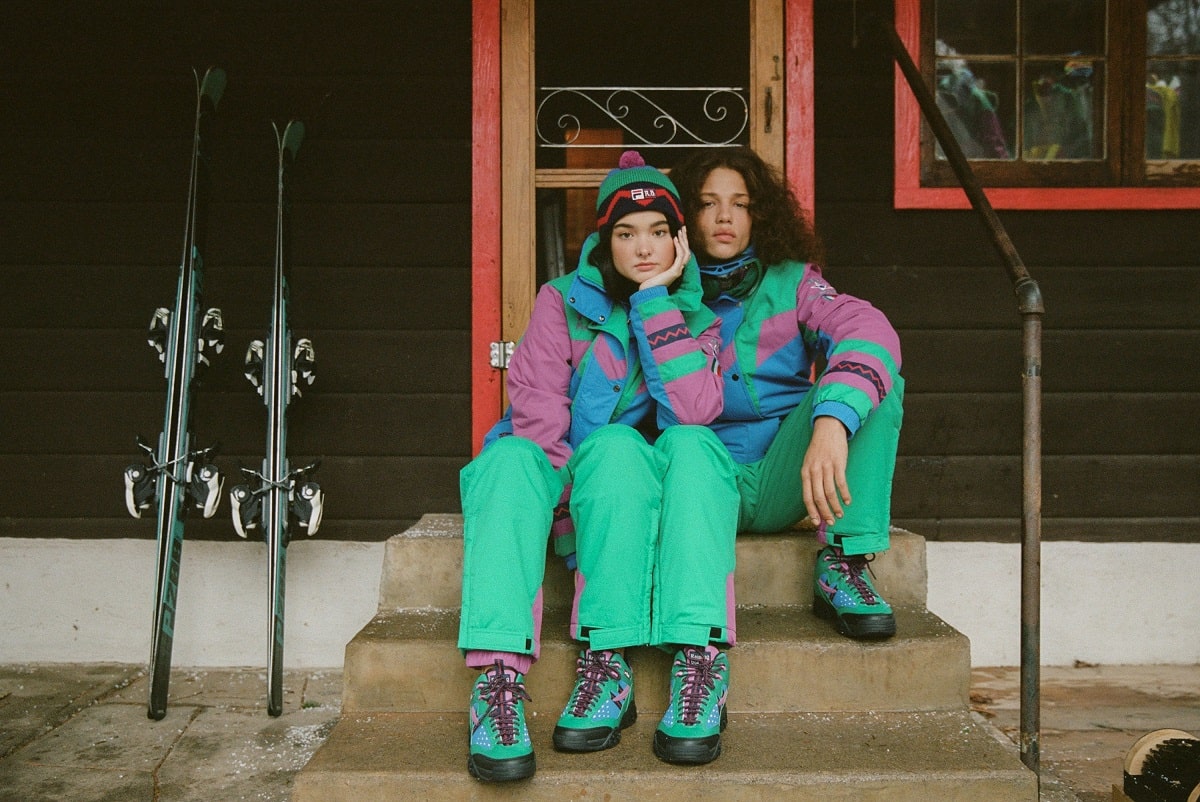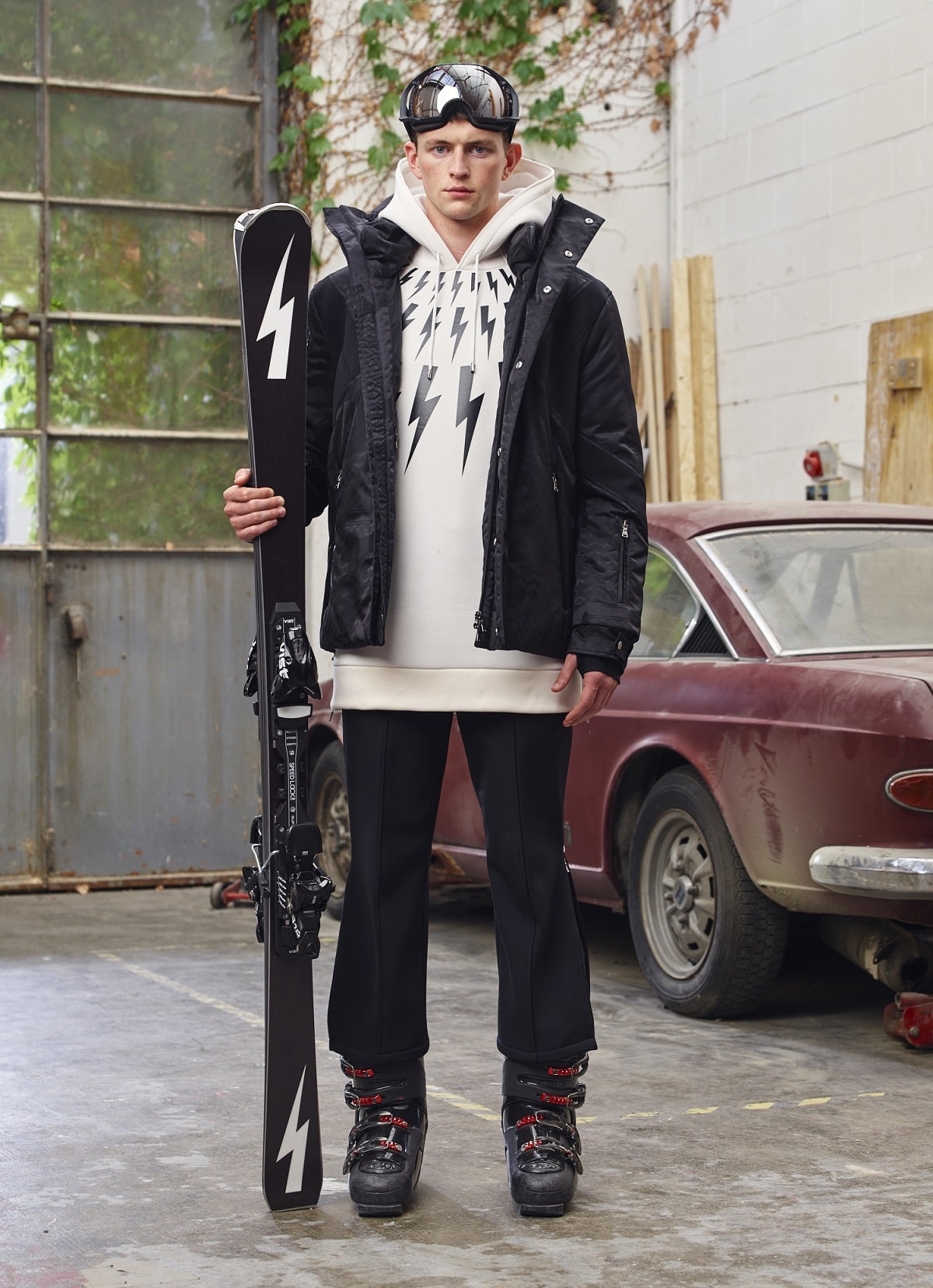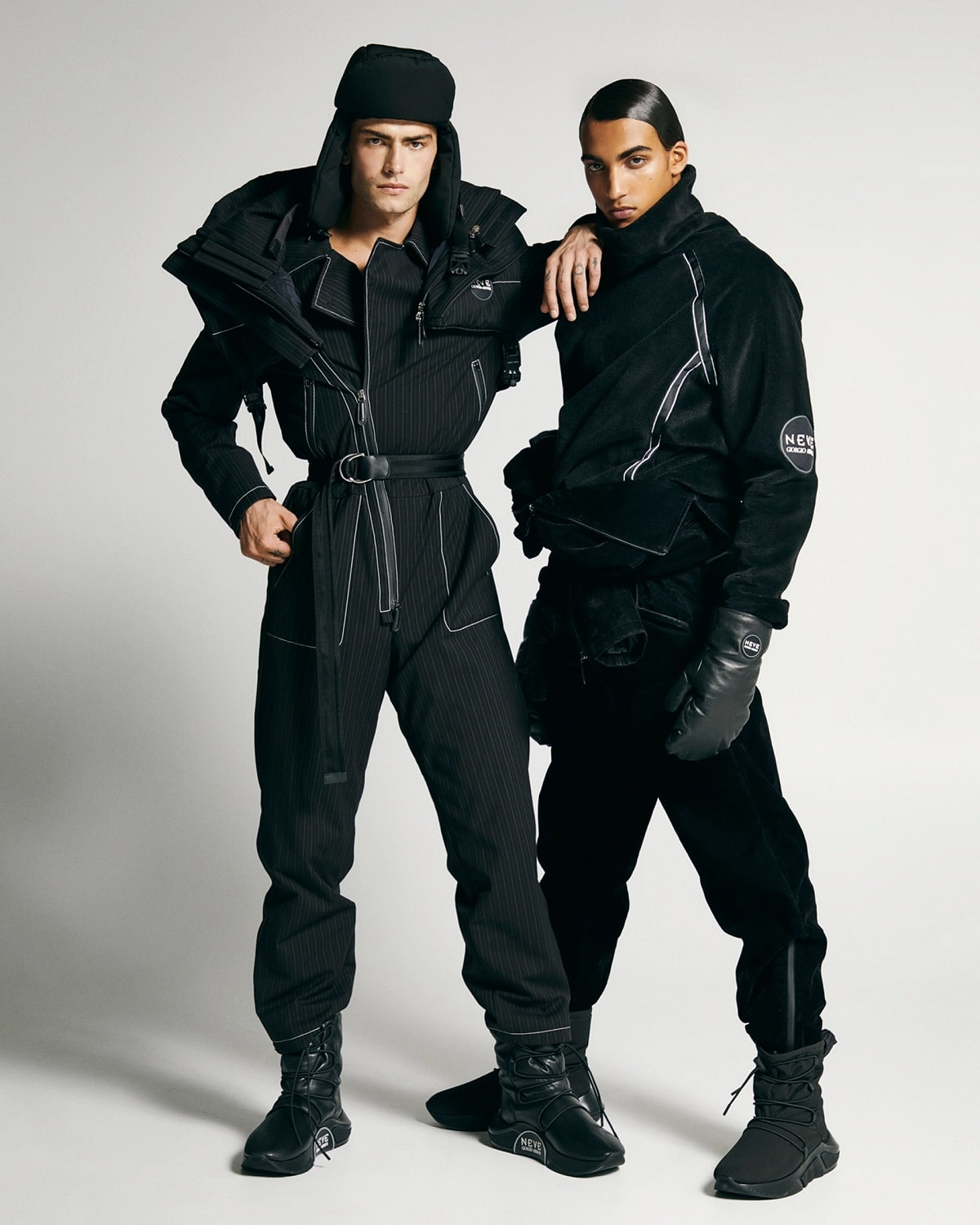1
HOME > Trends >
UNDERSTANDING MENSWEAR’S SKIING CURIOSITY
Written by Ivan Yaskey in Trends on the 12th January 2022

Winter sports connotates two groups: Activities we play indoors (or watch from home), and those deliberately taking advantage of the inches of snow accumulating over flat to hilly terrain. The former often entails basketball or a game of racquetball at the gym; the latter, a mix of skiing, snowshoeing, and winter hiking, based on your fitness level and abilities.
Apparel selections for the second group increasingly feel interchangeable – and why shouldn’t they? When you want to keep frozen precipitation out of your boots and away from your collar, you don garments designed to do just that, plus block any moisture and keep warmth close to the body.
Technical garments are no longer a phase: We expect more from jackets, sweatshirts, fleece, and boots geared toward wintertime wear. As such, curiosity over ski gear – often relegated to an outdoor retailer’s dedicated winter section or a specific ski and snowboarding shop – feels partially inevitable in an era of endless Arc’teryx memes and blurred streetwear-outdoors wear boundaries.

What We’re Seeing
To start, the current ski wear fascination falls into two distinct groups: There’s the fashionable technical garment and then there’s the everyday jacket or accessory inspired by “classic” (read: ‘80s and heavily colourblocked) designs.
Starting on the technical end, the Prada x ASPENX capsule collection launched recently with the debut of the Aspen Skiing Company, an experiential brand encompassing premium performance apparel, rental gear, and dining around Colorado’s resorts. The collection falls under Prada’s Linea Rossa line, designed for more athletic pursuits without compromising style.
What most might assume is a bid to give Prada some away-from-the-runway cred has resulted in a three-piece unisex technical collection highlighting Extreme-Tex, a three-layer insulated waterproof fabric, and Graphene for additional insulation and body temperature regulation. Prada collaborated with Aspen-area professional skiers and multimedia artist Paula Crown to develop the construction and black-and-white print adorning the garments.
Zegna, meanwhile, released its “Our Road, Beyond Boundaries” as yet another effort to shake up its perception as “just” high-end suiting. Designed under artistic director Alessandro Sartori, “Our Road” exemplifies the present fluidity in outdoor active gear, with pieces equipped for skiing and mountaineering. More complete than Prada’s offering, the capsule pairs elevated craftsmanship with more sustainable technical materials like Techmerino to repel the weather and keep the wearer warm.
While not a direct collaboration, brands La Sportiva, Zia, Kask, and Sigg opted to have Zegna rework many of their classic offerings.

Although Arc’teryx already developed an elevated version of its brand, it’s clear the company knows that collaborations continue to draw attention. Over the past couple of months, the Arc’teryx x Jil Sander capsule exemplified this. A five-piece unisex line designed specifically for the slopes includes a shell, ski overalls, and bib pants pairing 3L Gore-Tex Pro with weatherproof leather, taped seams, and more ergonomic forms with a colour inspired by glaciers.
Outside of apparel, skis emblazoned with luxury brand logos – in addition to Prada, Dior and Saint Laurent who have dabbled in this area – hammer the elevated performance theme home.
To the other end, menswear’s adoration for the ‘80s – the neon-hued Miami, blockbuster-inflected, and extravagantly colourblocked sides – doesn’t seem to be abating any time soon. As such, ski jacket and sweater inspired patterns are in abundance: More prominently, new-prep brand Rowing Blazers collaborated with Fila on a ski mountain resort-inspired collection based on the footwear brand’s Magic Line. Pop culture wise, you’d likely see something like this in one of the decade’s B-grade ski resort-set sex comedies. Today, the polyester construction and bright, contrast-heavy appearance combining both brands’ logos lacks the technical prowess of something by Arc’teryx or even The North Face but has the nostalgic appeal of, say, chunky leather running shoes.
On a similar note, we’re further spotting casual adoption of the balaclava. What’s long been a streamlined piece of outdoor headgear for hikers, snowshoers, skiers, and even motorcycle riders entered menswear by way of post-Soviet fashion. Right now, interest stems from its anonymous-meets-utilitarian nature that overlaps with military garb, and inclusion in presentations from Balmain, Givenchy, Moschino, and Raf Simons, among other brands, certainly doesn’t hurt.

Why Ski Wear, and Why Now?
Ultimately, the ubiquity of ski-inspired garments and designer-created technical pieces comes down to one factor: Streetwear did it first. Whether spurred by OVO’s collaboration with Canada Goose, or brands like The North Face developing more fashion-forward sub-brands – in this case, Purple Label and the Black Series – streetwear jumped on the gorpcore band wagon with vigour and added its logo- and print-based signature all over it.
Luxury Activity Inspiration
Traditional luxury brands have been more hesitant, however. What’s resulted are runway collections with extra flap pockets and bucket hats to allude to the outdoors without truly going all in or dabbling with select technical materials and treatments.
With consumers looking for ways to stay active and simultaneously socially distance, luxury activity inspo is all over men’s and women’s collections now. We’ve spotted it with polo and horseback riding – whether literal or deliberately appropriating, as has been the case with recent GmbH collections – and eventually golf, with multicoloured tech polos turning into an everyday menswear essential. Thus skiing – especially in its more flexible form with other outdoor pursuits – appears as a logical transition for the winter months.

Adaptable Construction
Although brands remained entranced with the ‘80s, most modern ski wear and hiking garments seem interchangeable. This aspect comes down to technical construction, developing more streamlined wardrobes, and the properties to achieve this.
For the outdoors, technical layering often begins with a soft or hardshell jacket, one enhanced with a durable water-repellent (DWR) finish or waterproof materials like GORE-TEX. Softshells end up being more adaptable, thanks to stretchy materials and insulation underneath, which results in a multipurpose garment.
Although a hardshell is decidedly techier, it presents some degree of adaptability: Its stiffer, waterproof, and usually windproof and UV-resistant exterior can be paired with fleece or another insulating midlayer underneath for the slopes, whether that’s to ski or hike in colder conditions.
Of course, dedicated ski and snowboarding jackets may go a step further, including a skirt to keep snow out, a hood built to fit over a helmet, and pockets appropriately sized for goggles and other accessories.
Then, in further considering outdoor pursuits and strategic layering, ski jackets – as well as ski pants – present enough room to not only add a midlayer underneath but a base layer to wick away moisture and help regulate body temperature and odour. This contrasts to the puffier, colourful ‘80s era garments – bulkier and relatively impractical for today’s streamlined approach – and gives you something that’s ready for everyday wear in an urban environment.

Trending
2
3
4
5
6
7
8
9
10










